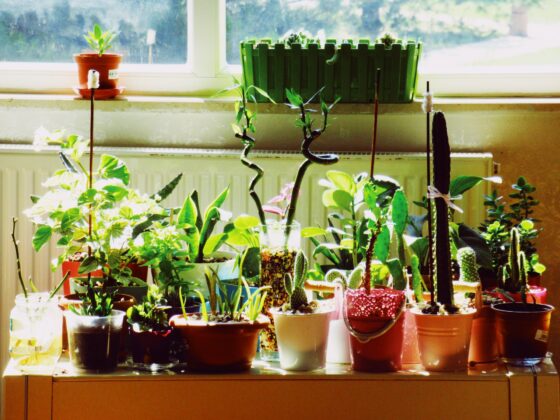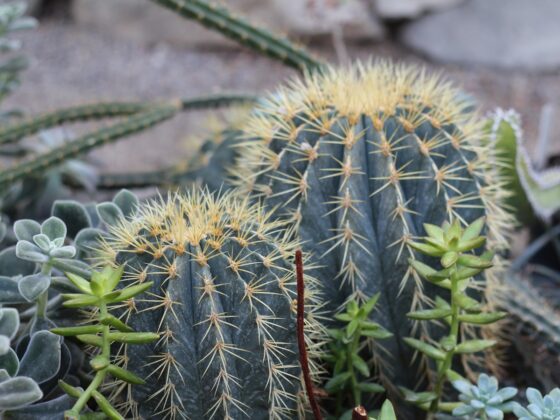Plants are a wonderful addition to any space, whether it’s indoors or outdoors. They not only bring beauty and a touch of nature to our surroundings but also offer numerous health benefits. However, it’s important to understand that not all plants are created equal. Some are better suited for indoor environments, while others thrive in the great outdoors. In this blog post, we will explore the key differences between indoor and outdoor plants to help you make informed decisions when it comes to selecting the right plants for your home or garden.

1. Environmental Requirements
One of the primary differences between indoor and outdoor plants lies in their environmental requirements. Outdoor plants are naturally adapted to thrive in the elements, including exposure to sunlight, wind, rain, and temperature fluctuations. On the other hand, indoor plants are typically more delicate and require controlled environments with stable temperatures, appropriate lighting, and proper humidity levels. They are not as tolerant of extreme weather conditions as their outdoor counterparts.
Indoor and outdoor plants have different environmental requirements that affect their growth and health. Some of the main differences are:
- Light: Indoor plants usually need less light than outdoor plants, as they are grown in artificial or natural light sources. Outdoor plants need more light to perform photosynthesis and produce flowers or fruits. The amount of light that a plant needs depends on its species, size, and adaptation. Some indoor plants can tolerate low light, while some outdoor plants need full sun exposure.
- Water: Indoor plants generally need less water than outdoor plants, as they are grown in pots or containers that limit their access to water. Outdoor plants need more water to survive in the natural environment, as they have to cope with droughts, floods, and evaporation. The amount of water that a plant needs depends on its species, soil type, and climate. Some indoor plants can survive with occasional watering, while some outdoor plants need regular irrigation.
- Temperature: Indoor plants usually need a stable temperature range to thrive, as they are exposed to fluctuations caused by heating or cooling systems. Outdoor plants need a wider temperature range to adapt to the changing seasons and weather conditions. The optimal temperature for a plant depends on its species, origin, and tolerance. Some indoor plants can tolerate cold or heat better than others, while some outdoor plants have specific temperature preferences.
- Soil: Indoor plants usually need well-drained soil that is rich in organic matter and nutrients. Outdoor plants need loose soil that allows air circulation and drainage. The type of soil that a plant needs depends on its species, growth habits, and nutrient requirements. Some indoor plants prefer acidic or alkaline soil better than others, while some outdoor plants have specific soil pH levels.
2. Light Requirements

Light is an essential factor for plant growth, and it plays a significant role in determining whether a plant is better suited for indoor or outdoor cultivation. Most outdoor plants require full sun or partial shade to thrive, as they have evolved to receive direct sunlight for several hours a day. Indoor plants, on the other hand, often prefer indirect or filtered light. Placing an indoor plant in direct sunlight for extended periods can lead to leaf burn or other damage.
3. Size and Growth Habits
Another noticeable difference between indoor and outdoor plants is their size and growth habits. Outdoor plants tend to be larger and more robust, as they have more space to spread their roots and grow freely. They can reach their full potential, both in terms of height and width. Indoor plants, on the other hand, are generally smaller in size and have more compact growth habits. They are often cultivated in pots or containers, which restricts their growth to some extent.
4. Maintenance and Care
The level of maintenance and care required for indoor and outdoor plants can also vary significantly. Outdoor plants are typically more self-sufficient and can rely on natural elements such as rainwater and insects for pollination. They require less frequent watering and feeding. Indoor plants, on the other hand, rely on us for their basic needs. They need regular watering, occasional fertilization, and attention to factors like humidity, temperature, and air circulation.
5. Purpose and Aesthetics
When it comes to selecting plants, the purpose and aesthetics of the space play a crucial role. Outdoor plants are often chosen for their ability to enhance the overall landscape, create privacy, or provide shade. They can be used to create beautiful gardens, hedges, or even vertical green walls. Indoor plants, on the other hand, are primarily chosen for their aesthetic appeal and ability to purify the air indoors. They can add a touch of greenery and freshness to any room and create a calming and inviting atmosphere.
Conclusion
Understanding the differences between indoor and outdoor plants is essential for successful plant cultivation. While outdoor plants thrive in natural elements and require less maintenance, indoor plants offer the flexibility to bring nature inside and improve the air quality of our living spaces. So whether you’re looking to create a lush garden outdoors or a cosy green corner indoors, choose the right plants that suit your environment and personal preferences. Happy gardening!
Frequently Asked Question
The main difference between indoor and outdoor plants is their temperature tolerance. Indoor plants are usually tropical plants that prefer warm and humid conditions, while outdoor plants can withstand a wider range of temperatures and climates.
Some plants can be grown both indoors and outdoors, as long as they are given the appropriate care and environment. However, some plants are strictly indoor or outdoor plants and will not survive if moved to a different location. You should always check the specific requirements of your plants before changing their location.
Indoor and outdoor plants have different care needs, such as sunlight, water, soil, and fertilizer. Indoor plants generally need less sunlight and water than outdoor plants, but they may need more humidity and nutrients. Outdoor plants may need more protection from pests, diseases, and weather. You should always follow the instructions that come with your plants or consult a reliable source for more information.
Indoor and outdoor plants can provide many benefits for your home, health, and well-being. Indoor plants can improve air quality, reduce stress, enhance mood, and boost productivity. Outdoor plants can beautify your garden, attract wildlife, produce food, and conserve water. Both indoor and outdoor plants can also help you connect with nature and express your creativity.
There are many different types of plants that you can grow indoors or outdoors, depending on your preference and space. Some common indoor plants are snake plants, pothos, peace lilies, spider plants, and succulents. Some popular outdoor plants are ornamental trees and shrubs, vines, vegetables and herbs, and perennial and annual flowers.






